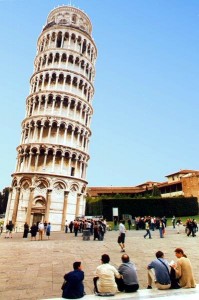As a culture, we’re fascinated by design failures. Call it curiosity, a determination to do better, or a simple inability to glance away from impending train wrecks, but engineering failures like the Tacoma Bridge Collapse have captivated our attention throughout history. Some structural engineering failures, however, don’t result in rippling concrete and bending steel. These 3 historical buildings are famous for design flaws that, rather causing grandiose collapses, have become part of their appeal.
The Bent Pyramid of Dahshur
The Egyptian pyramids have fascinated structural engineers for centuries. These immense structures seem too precisely constructed for ancient construction and technology. One pyramid, however, shows that ancient Egyptian builders sometimes miscalculated architectural design, just as modern engineers do. The Bent Pyramid of Dahshur transitions sharply from a 54-degree slant to a 43-degree slant. Modern engineers postulate that ancient architects realized their initial angle would not be stable enough to prevent collapse. The bent pyramid remains a popular destination for tourists visiting Cairo, Egypt.
The Beauvais Cathedral
The Beauvais Cathedral proves that some engineers just won’t learn. The structure, started in 1225, promised to be the tallest, broadest, and most ornate cathedral in existence. The engineers, however, couldn’t account for the weight of the building. The vaulted ceiling collapsed in 1284, halting construction. In the following centuries, dozens of architects attempted to finish the French cathedral; each attempt ended in disaster. The Gothic cathedral remains unfinished, but architects, engineers, and art students still study its structural flaws and their role in the decline of Gothic architecture.
The Leaning Tower of Pisa
Perhaps the most famous structural engineering miscalculation, The Leaning Tower of Pisa, has captivated the world since it began to sink into the earth just five years into its construction. The design flaw lays in the foundation: 12th century engineers constructed a foundation only 3 meters thick to support the weight of the Pisa Square bell tower. It continued to slant sharply during and after the last 95 years of construction, until 20th century engineers were forced to close the building to tourists to add stabilizing cables, trusses, and counterweights. Structural engineers predict the improved tower will remain stabilized at its 4 degree lean for 200-300 years. Today this engineering failure is one of Italy’s most famous tourist attractions.
Do famous structural engineering oversights captivate your attention? Call Engineering Search Partners for help finding a career in structural or forensic engineering.

